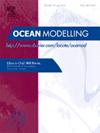Wave condition prediction and uncertainty quantification based on SG-MCMC and deep learning model
IF 2.9
3区 地球科学
Q2 METEOROLOGY & ATMOSPHERIC SCIENCES
引用次数: 0
Abstract
Deep learning methods have increasingly gained popularity in wave prediction; however, previous works predominantly focused on point estimates without quantifying the uncertainty of predictions. In certain scenarios, generating probabilistic forecasts with credible intervals is crucial for vessel navigation planning and marine infrastructure construction, etc. Therefore, this paper attempts to conduct a benchmark study on wave prediction uncertainty from both frequentist and Bayesian perspectives. A wave prediction model based on the ConvLSTM combined with various uncertainty quantification methods has been established, and a unified evaluation framework has been constructed using statistical decision theory. We utilized the fifth-generation atmospheric reanalysis dataset (ERA5) from the European Centre for Medium-Range Weather Forecasts as experimental data, employing key wave parameters (significant wave height, mean wave period, and mean wave direction) for model training and testing. Through extensive repeated experiments, we found that Bayesian methods generally provide more accurate average predictions, with the SG-MCMC method performing the best, achieving RMSE values of 0.37 m and 0.49 s for HS and TM at the 24-hour prediction, respectively, and CC values of 93.65 % and 90.65 %. On the other hand, confidence intervals obtained from frequentist methods offer broader coverage for data variations, with the MIS regression method performing the best, yielding the lowest MIS scores of only 2.92 m and 1.93 s for HS and TM at the 24-hour prediction, respectively. Indeed, this result underscores a limitation of current methods: the confidence intervals do not adequately reflect the accuracy of the predictions. In contrast, the SG-MCMC method demonstrates superior performance by excelling in both mean prediction and confidence limits.
基于 SG-MCMC 和深度学习模型的波浪状况预测与不确定性量化
深度学习方法在波浪预测中越来越受欢迎;然而,以前的工作主要集中在点估计上,而没有量化预测的不确定性。在某些情况下,生成具有可信区间的概率预测对于船舶航行规划和海洋基础设施建设等至关重要。因此,本文试图从频率论和贝叶斯两个角度对波浪预测的不确定性进行基准研究。结合多种不确定性量化方法,建立了基于ConvLSTM的波浪预测模型,并利用统计决策理论构建了统一的评价框架。我们利用欧洲中期天气预报中心的第五代大气再分析数据集(ERA5)作为实验数据,采用关键波参数(有效波高、平均波周期和平均波向)进行模型训练和测试。通过大量的重复实验,我们发现贝叶斯方法通常提供更准确的平均预测,其中SG-MCMC方法表现最好,在24小时预测时HS和TM的RMSE值分别为0.37 m和0.49 s, CC值为93.65%和90.65%。另一方面,从频率方法获得的置信区间为数据变化提供了更广泛的覆盖范围,其中MIS回归方法表现最好,在24小时预测中HS和TM的MIS得分最低,分别为2.92 m和1.93 s。事实上,这一结果强调了当前方法的局限性:置信区间不能充分反映预测的准确性。相比之下,SG-MCMC方法在平均预测和置信限方面都表现出优异的性能。
本文章由计算机程序翻译,如有差异,请以英文原文为准。
求助全文
约1分钟内获得全文
求助全文
来源期刊

Ocean Modelling
地学-海洋学
CiteScore
5.50
自引率
9.40%
发文量
86
审稿时长
19.6 weeks
期刊介绍:
The main objective of Ocean Modelling is to provide rapid communication between those interested in ocean modelling, whether through direct observation, or through analytical, numerical or laboratory models, and including interactions between physical and biogeochemical or biological phenomena. Because of the intimate links between ocean and atmosphere, involvement of scientists interested in influences of either medium on the other is welcome. The journal has a wide scope and includes ocean-atmosphere interaction in various forms as well as pure ocean results. In addition to primary peer-reviewed papers, the journal provides review papers, preliminary communications, and discussions.
 求助内容:
求助内容: 应助结果提醒方式:
应助结果提醒方式:


